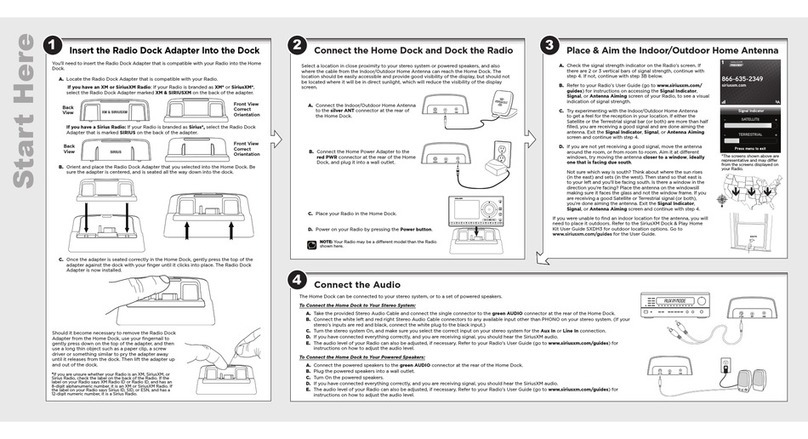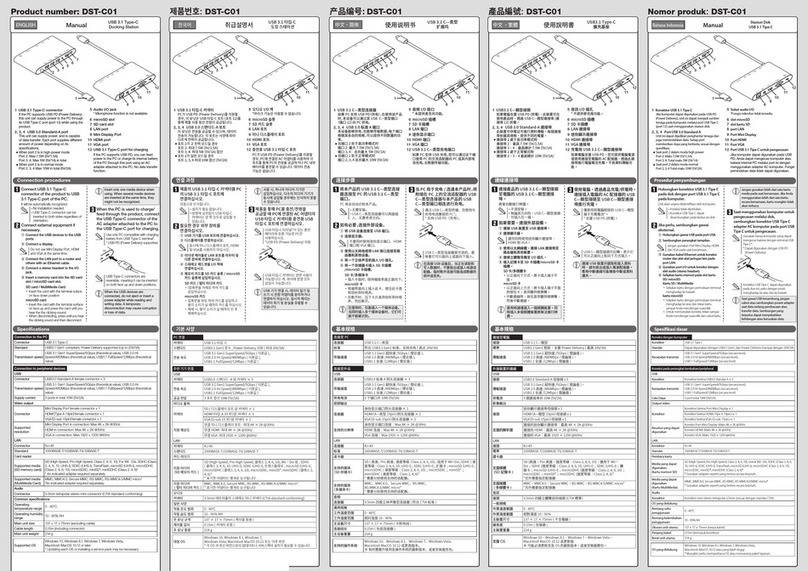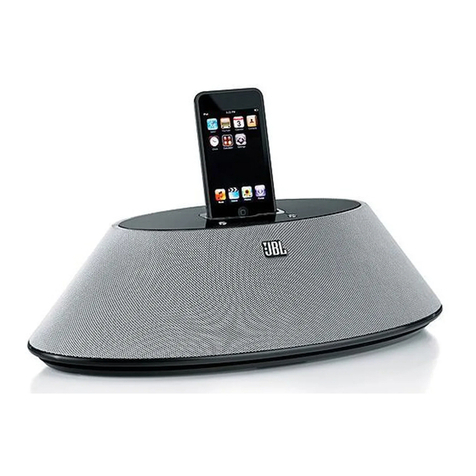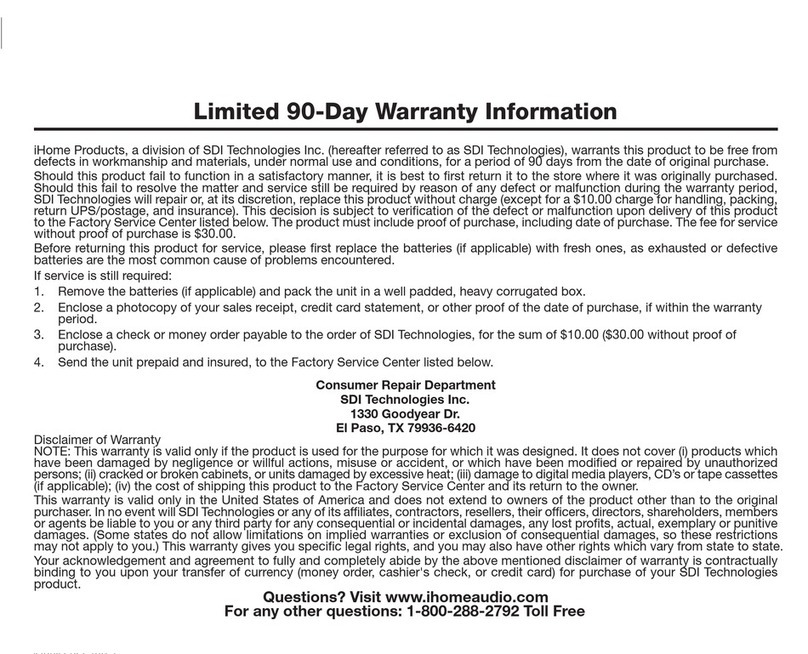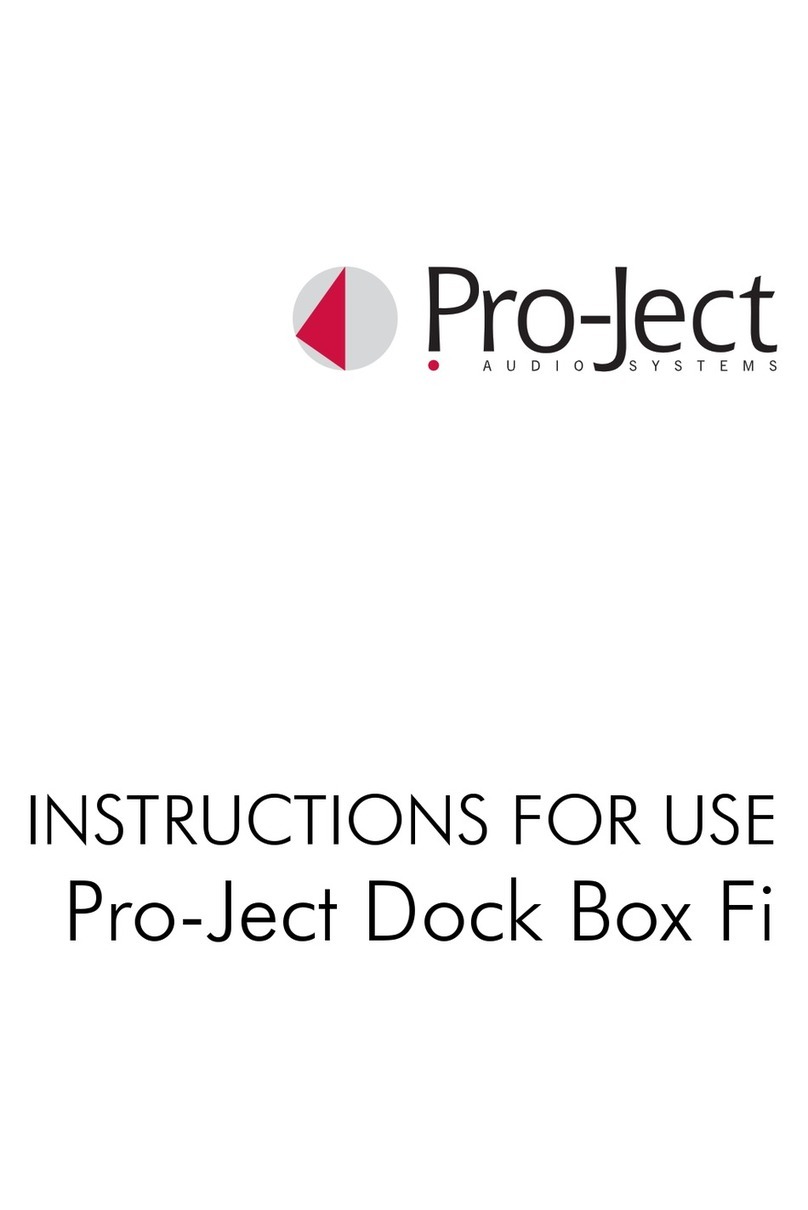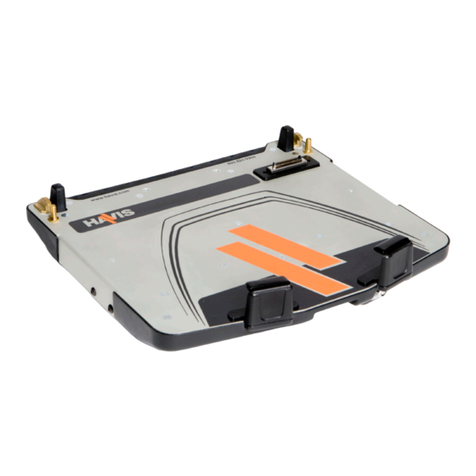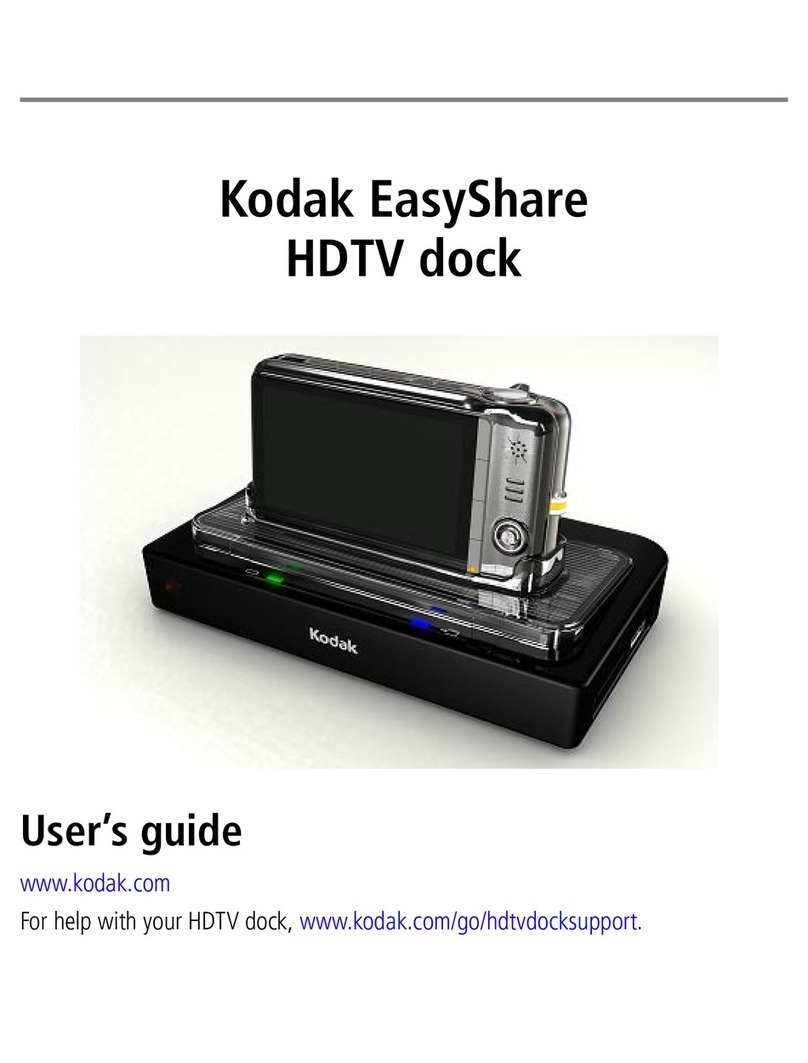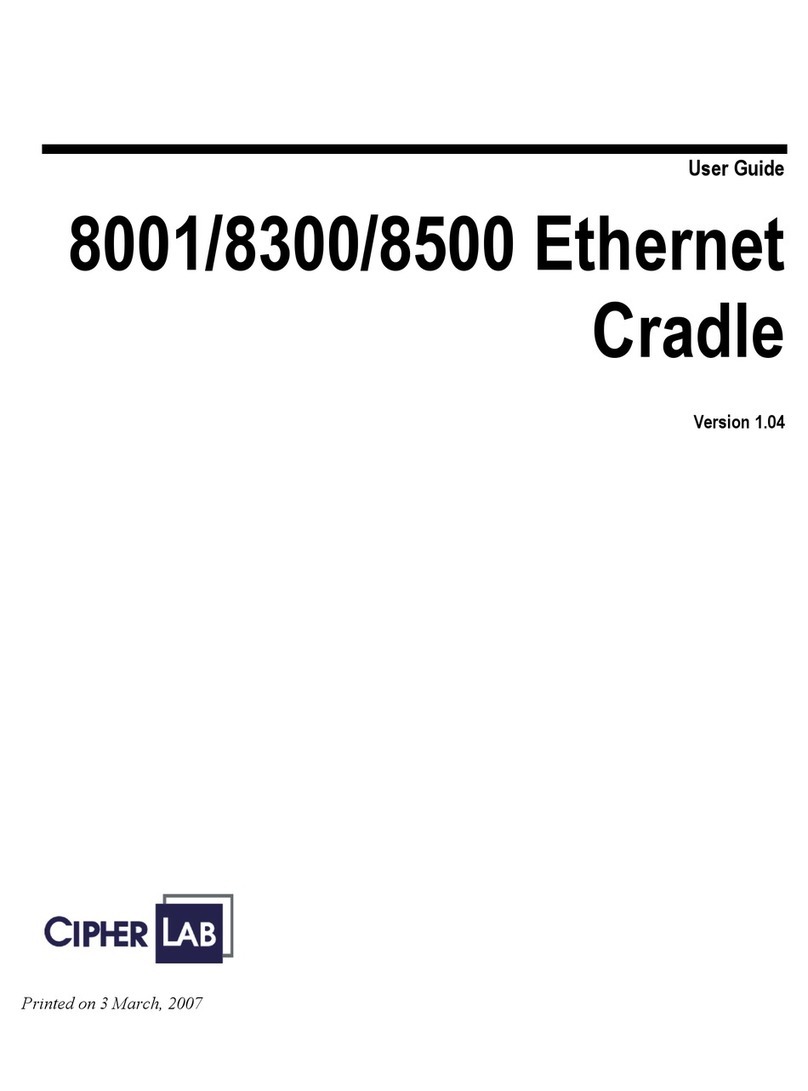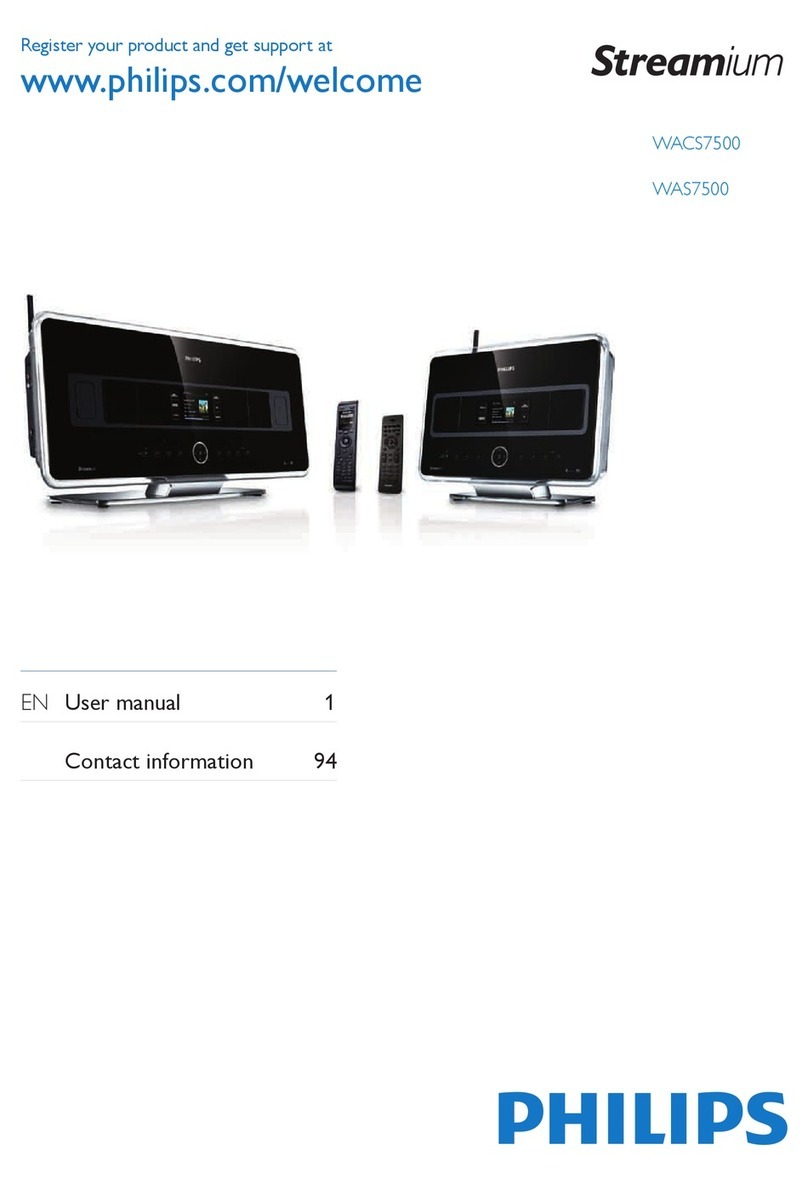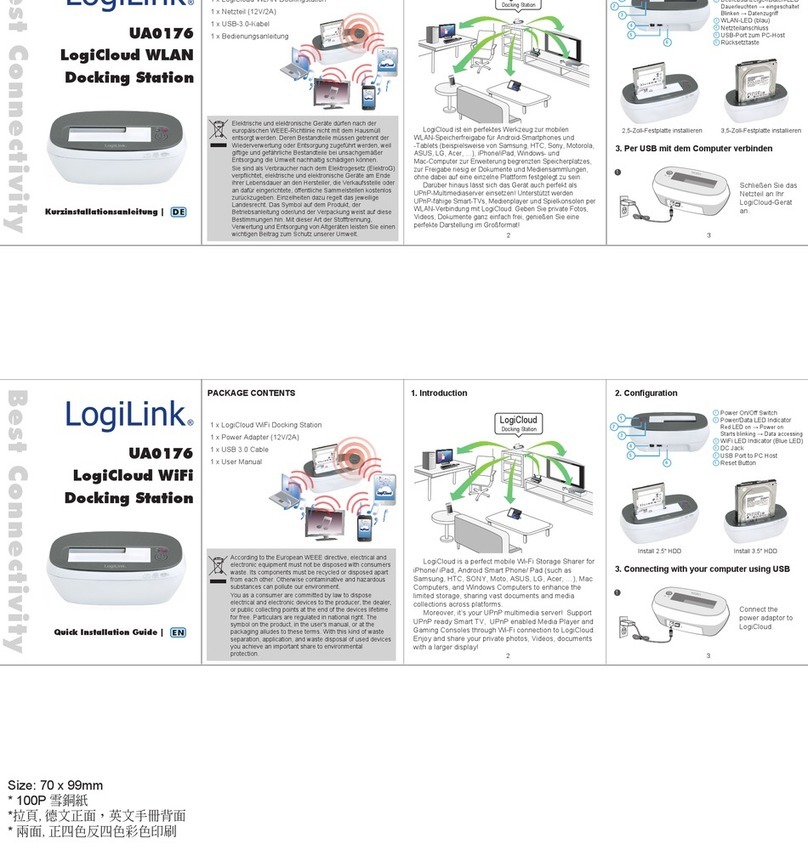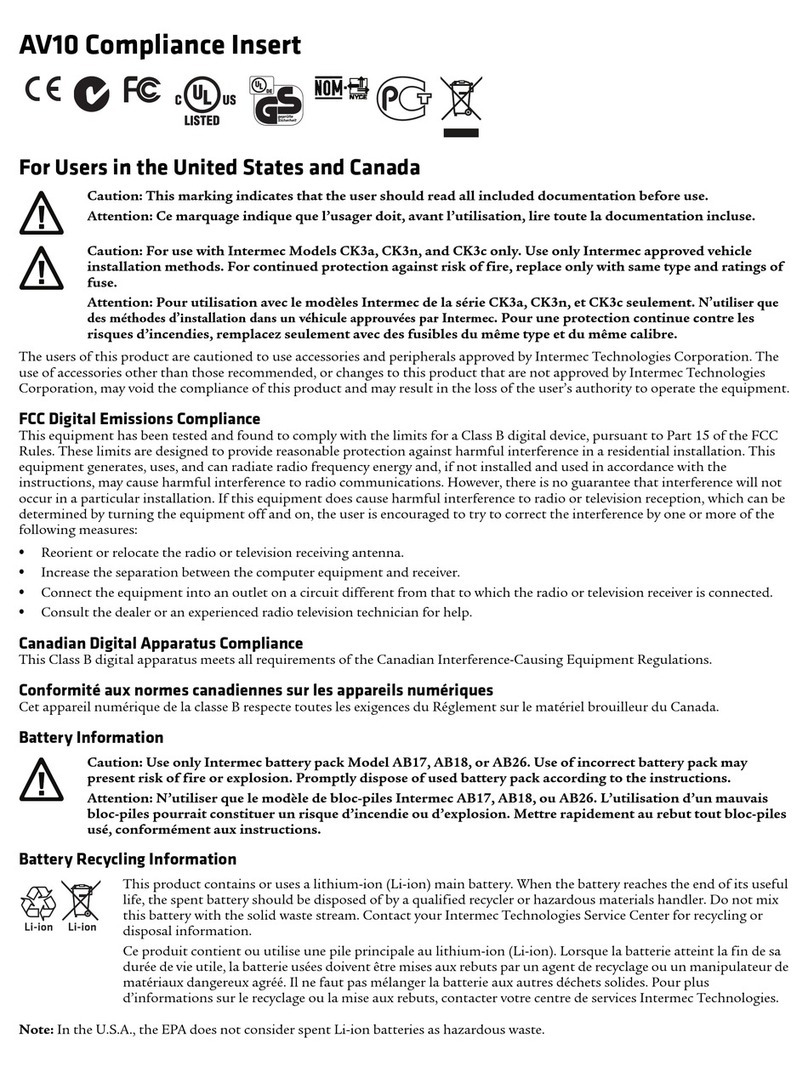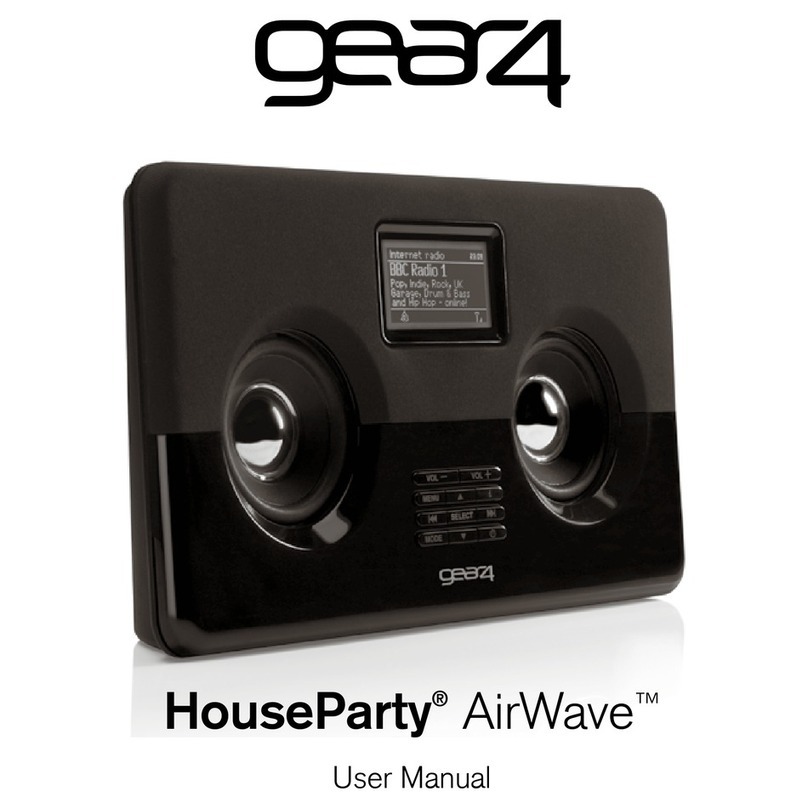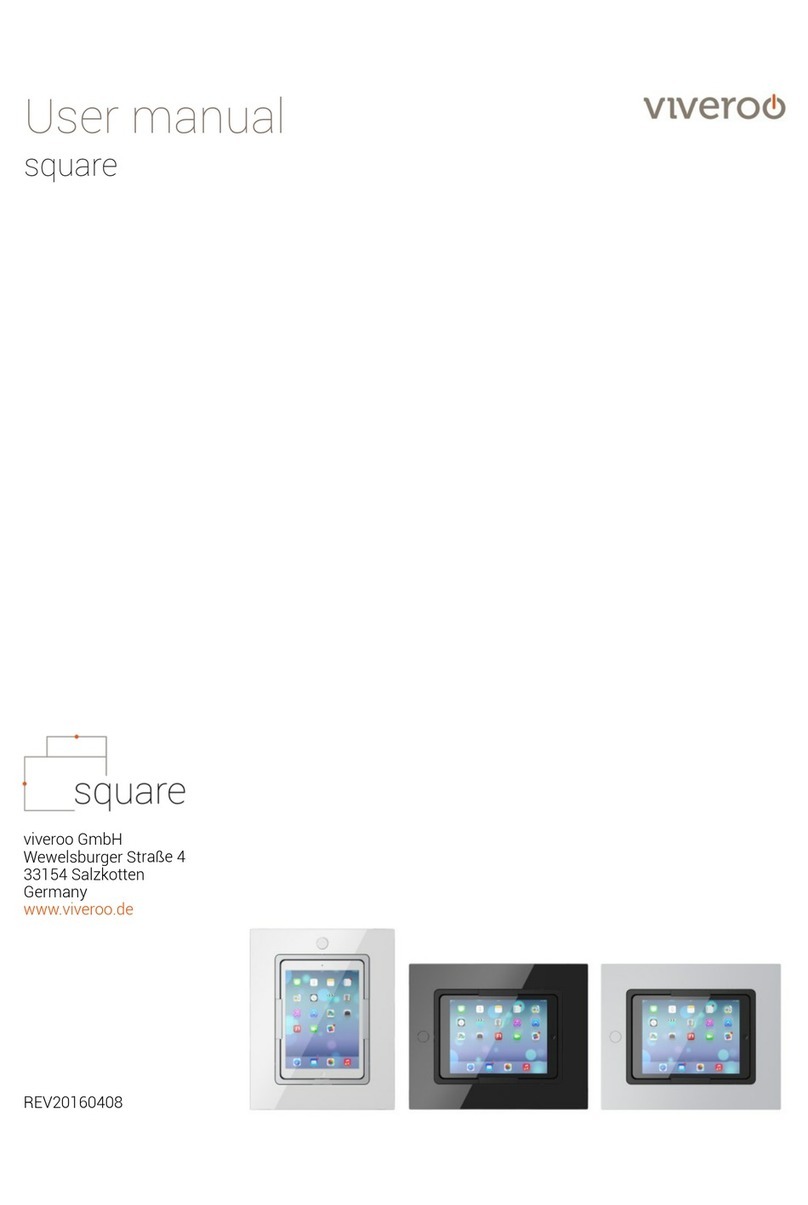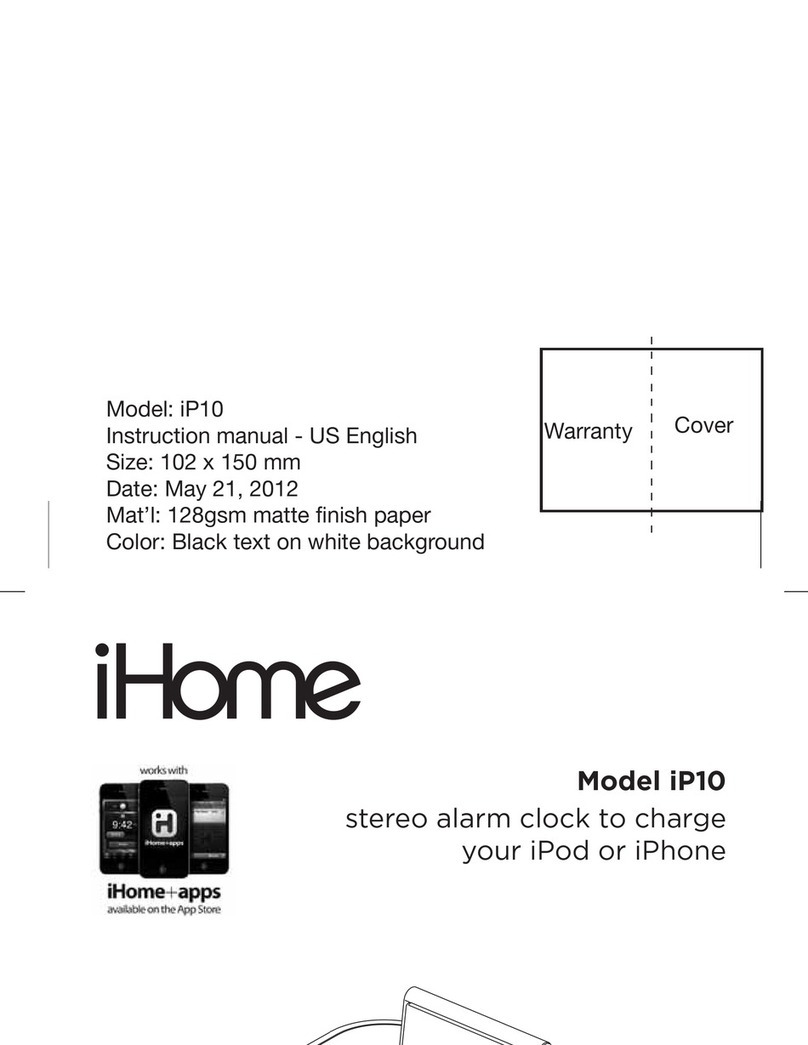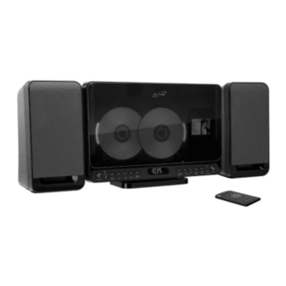Sirius XM RAdio Home Kit User manual

Home Kit For XM Radios
User Guide


3
Table of Contents
Introduction ......................................................5
Features. . . . . . . . . . . . . . . . . . . . . . . . . . . . . . . . . . . . . . . . . . . . . . . . . . . . . . . . . . . . . . . . . . . . . . . 6
Safety and Care Information .....................................................7
What’s in the Box? . . . . . . . . . . . . . . . . . . . . . . . . . . . . . . . . . . . . . . . . . . . . . . . . . . . . . . . . . . . . . . 8
Home Dock ....................................................................9
Home Installation. . . . . . . . . . . . . . . . . . . . . . . . . . . . . . . . . . . . . . . . . . . . . . . . . . 11
Step 1: Connect the Home Dock. . . . . . . . . . . . . . . . . . . . . . . . . . . . . . . . . . . . . . . . . . . . . . . . . . 12
Step 2: Install the Indoor/Outdoor Antenna. . . . . . . . . . . . . . . . . . . . . . . . . . . . . . . . . . . . . . . . 16
Troubleshooting .................................................. 21
Product Specifications ............................................25
Patent Information. . . . . . . . . . . . . . . . . . . . . . . . . . . . . . . . . . . . . . . . . . . . . . . . . . . . . . . . . . . . . 27
Environmental Information . . . . . . . . . . . . . . . . . . . . . . . . . . . . . . . . . . . . . . . . . . . . . . . . . . . . . . 27

4

5
Introduction

6
Introduction
Features
Congratulations on the purchase of your Home Kit!
The Home Kit lets you enjoy your favourite SiriusXM programming through your
home audio system.
Compatible with the Edge, Onyx, XpressRCi, XpressRC, XpressR, and XpressEZ
radios.

7
Safety and Care Information
IMPORTANT! Always read and understand all the instructions to avoid injury to
yourself and/or damage to your device. Sirius XM Canada Inc. disclaims all
responsibility for damage from data loss due to breakdown, repair, or other
causes.
• Do not expose to extreme temperatures (above 60°C or below -20°C, or
above 140°F or below -4°F).
• Do not expose to moisture. Do not use device near or in water. Do not
touch the device with wet hands.
• Do not let any foreign matter spill into device.
• Do not store in dusty areas.
• Do not expose to chemicals such as benzene and thinners. Do not use
liquid or aerosol cleaners. Clean with a soft damp cloth only.
• Do not expose to direct sunlight for a prolonged period of time, and do not
expose to fire, flame, or other heat sources.
• Do not try to disassemble and/or repair device yourself.
• Do not drop your device or subject it to severe impact.
• Do not place heavy objects on device.
• Do not subject device to excessive pressure.
WARNING!
• Opening the case may result in electric shock.
• Make sure that you insert the Home Power Adapter’s plug all the way into
the outlet.

8
Introduction
What’s in the Box?
TIP! If you prefer to use a Remote Control, and you want to add one to your
Home Kit, visit siriusxm.ca or your favourite retailer.
Home Dock
Indoor/Outdoor
Antenna Stereo Audio
Cable
Home Power
Adapter

9
Rear View
Home Dock
Connections
ANT IN
Connection for
the Indoor/
Outdoor
Antenna.
AUDIO OUT
Connection for home
stereo system or
powered speakers.
DC IN
Connection for
Home Power
Adapter.
AUDIO OUT ANT IN DC IN

10

11
Home Installation

12
There are two parts to setting up your Home Kit. First, connecting the Home
Dock to your stereo or powered speakers, then placing and aiming the Home
Antenna. Let’s start with getting your Home Dock set up.
Step 1: Connect the Home Dock
When installing the Home Dock in your home, choose a location in close proximity
to your home stereo system or powered speakers, and also where the cable from
the Indoor/Outdoor Antenna can reach the Home Dock. The location should be
easily accessible and provide good visibility of the display, but should not be
located where it will be in direct sunlight, which will affect the visibility of the
display screen.
You will also need to decide whether you will be connecting your Home Dock to
your home stereo system using the provided Stereo Audio Cable, or directly to
powered speakers.
Connect the Indoor/Outdoor Antenna
Once you have selected a location, connect the antenna to the ANT IN connector
at the rear of the Home Dock.
(After completing a few additional
steps, we will work on the location
of the antenna.)
Home Installation
AUDIO OUT ANT IN DC IN

13
Connect the Home Power Adapter
Connect the Home Power Adapter to the DC IN connector at the rear of the
Home Dock, and plug it into a wall outlet.
Connect the Home Dock to a Home Stereo System or Powered
Speakers
The Home Dock can be connected to your home stereo system, or to a pair
of powered speakers. If you are connecting to a home stereo system, see the
following section. If you are connecting to a pair of powered speakers, see "To
Connect the Home Dock to Your Powered Speakers" on page 15.
To Connect the Home Dock to Your Home Stereo System
The Home Dock can be connected to your home stereo system through the AUX
IN or LINE IN connection of your home stereo system, using the provided Stereo
Audio Cable.
AUDIO OUT ANT IN DC IN

14
Home Installation
1. Take the provided Stereo Audio Cable and connect the single 3.5 mm
(1/8”) connector to the AUDIO OUT connector at the rear of the Home
Dock.
2. Connect the white left and red right Stereo Audio Cable connectors
(“L” and “R” are also on each respective tip) to any available input
other than PHONO on your home stereo system. (If your stereo’s
inputs are marked red and black, simply connect the white plug to the
black input.)
3. Turn the home stereo system On, and make sure you select the correct
input on your stereo system for the AUX In or LINE In connection.
AUDIO OUT ANT IN DC IN
L
R

15
To Connect the Home Dock to Your Powered Speakers
The Home Dock can be connected directly to a pair of powered speakers.
1. Connect the 3.5 mm (1/8”) connector from the powered speakers to
the AUDIO OUT connector at the rear of the Home Dock.
2. Plug the powered speakers into an AC outlet.
3. Turn On the powered speakers.
Dock Your Radio
Place your radio into the Home Dock as shown, and
turn the radio On by pressing the Power button.
AUDIO OUT ANT IN DC IN

16
Step 2: Install the Indoor/Outdoor Antenna
To begin, try experimenting with the Home Antenna to get a feel for the reception
in your location. Move the antenna around the room or from room to room. Aim
it from different windows. In major metropolitan areas, you might find that you
get great reception in several locations without worrying too much about aim and
placement.
Refer to your radio’s User Guide for
instructions, and access the Signal or Signal
Indicator screen of your radio to see a visual
indication of signal strength. If you’re receiving
a good Satellite and Terrestrial signal strength,
you’re done. If not, try some of the suggestions
which follow.
Other Indoor/Outdoor Antenna Installation Suggestions
If you find you are getting a
signal, but it’s inconsistent,
try moving the Indoor/
Outdoor Antenna closer to
a window, ideally one that is
facing due south.
Not sure which way is south?
Think about where the sun
rises (in the east) and sets (in
the west). Then stand so that
east is to your left and you’ll
be facing south. Is there a
Home Installation

17
window in the direction you’re facing? Move the antenna closer to the window.
TIP! Still not sure which way is south or where to place your Home Antenna?
Look up your location on an online mapping Web site that offers satellite views
of street addresses where you can easily see which way is south, and what
window may offer an unobstructed view of the sky.
Another easy method is to start at any window, then work from window to
window in a simple pattern to find the window gives the best signal strength.
Note that the antenna must also have an unobstructed view. No trees or
buildings blocking its aim. If the antenna is aimed through a window, be aware
that blinds, screens, or any other non-glass elements such as thermal insulation
can sometimes cause reception issues. If this is the case, you may want to use
another window or place the antenna outside of the window.
If you find a window that gives you good signal
strength, you can place the antenna on the
windowsill. The antenna may need to be placed
on something to raise it above the level of the
window frame.
If you don’t have a window where you receive
a consistent signal, or placing the antenna in
a window is not a practical solution for you,
BETTER reception can be achieved by placing
the antenna outside on a window ledge, porch,
table, or patio. The location you choose should
provide the antenna with a clear view of the
southern sky.
If none of the previous solutions work for you, then the BEST reception can be
achieved by mounting the antenna outdoors, with a clear view of the southern
sky.
SOUTH

18
Note that you will want to consider any
potential hazards when you choose
the mounting location, and possibly
consider professional installation.
Sirius XM Canada Inc. is not liable for
any damages.
To mount the antenna, you will need
four screws (not included) with a 1/4”
head (e.g., an M3 screw), and that
are suitable for the material onto
which you are affixing the antenna,
(e.g., wood, metal, etc.). The screws
should be spaced 35 mm (1-3/8”)
apart horizontally and 30 mm (1-1/8”)
vertically. Refer to the template on
"Indoor/Outdoor Antenna
Template" on page 30.
Home Installation
OUTDOORS
SOUTH
SOFFIT
SOUTH

19
Once you have found a suitable location for the
antenna, route the antenna cable to the Home
Dock. Be sure you avoid any obstructions
that could crimp, kink, or twist the cable. Use
protective grommets wherever rough openings
are encountered. If the antenna is installed
outdoors, route the cable from the antenna
location to the interior of the home, working
the cable through the basement, under a
window sill, etc., and make adjustments to take
up cable slack as necessary.
TIP! If your Indoor/Outdoor Antenna’s
cable isn’t long enough, visit siriusxm.ca, or your favourite retailer, and consider a 15
m (50 ft.) Indoor/Outdoor Antenna Extension Cable or a Wireless Home Signal
Repeater.
If the signal is good for either Satellite or Terrestrial (or both), and you are
hearing the audio from the radio, the installation is complete.
If the signal reception is low, or intermittent, try another location for the antenna.
Verify that the antenna is pointed south, and that the antenna’s view of the sky
is not blocked by a tree, a building, a bridge, or anything else. Adjust until you are
receiving a good signal.
The Indoor/Outdoor Antenna’s reception can also be tweaked by opening or
closing the antenna clamshell, and turning the antenna. While observing the
signal strength, make small adjustments to the angle of tilt of the clamshell until
the highest possible signal strength is achieved. If you have not wall-mounted
the antenna, turn the antenna slightly to the right or left and observe if the
35 mm
(1-3/8 in)
(1-1/8 in)
30 mm

20
signal strength increases. For each tweak, allow a few seconds in each position to
determine if the signal strength increases.
If the signal reception is good, but there is no audio, verify your audio connection.
• If you are connected to a home stereo system, be sure the system is set to
the auxiliary input source, and you have connected the Stereo Audio Cable
to the auxiliary input connectors.
• If you are connected to powered speakers, be sure the speakers are
plugged into an outlet, and are turned On.
The audio level of your radio can also be increased. Refer to the User Guide which
accompanied your radio and increase the audio level.
If you still have questions, for example, ‘Are there any other options/things I
should consider?’, etc., refer to "Troubleshooting" on page 22.
Home Installation
SOUTH
Other manuals for Home Kit
1
This manual suits for next models
1
Table of contents
Other Sirius XM RAdio Docking Station manuals
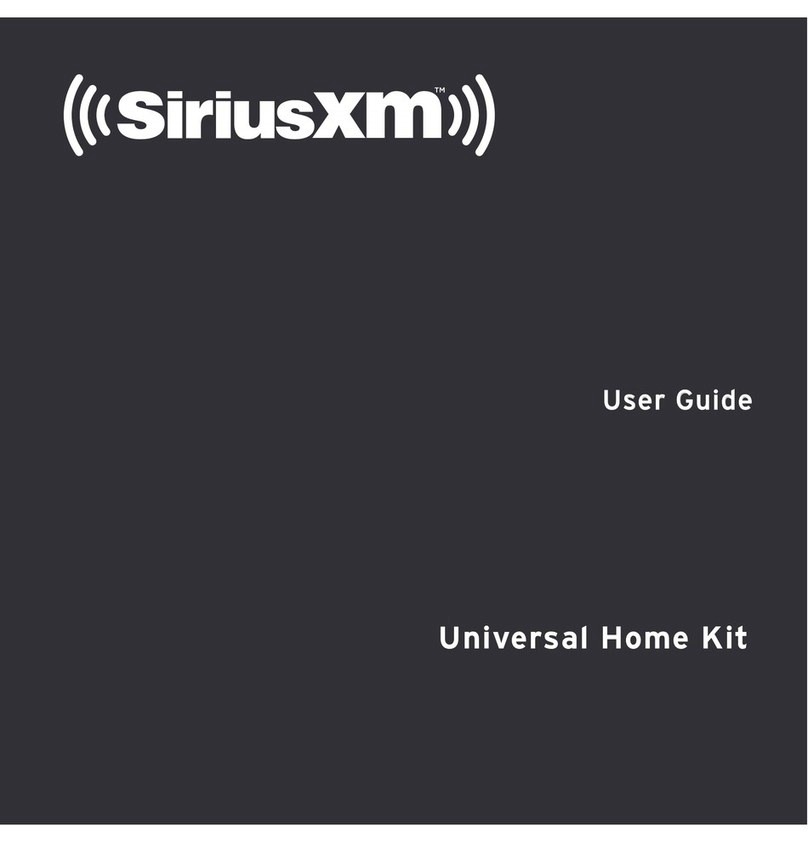
Sirius XM RAdio
Sirius XM RAdio Universal Home Kit User manual
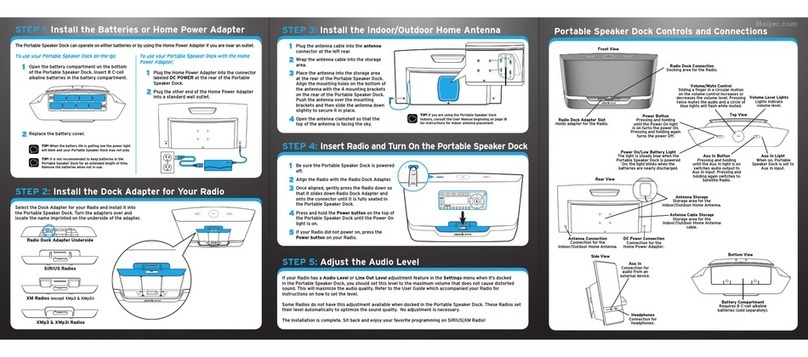
Sirius XM RAdio
Sirius XM RAdio Portable speaker dock User manual

Sirius XM RAdio
Sirius XM RAdio SCHDOC1 - Sirius Connect Home Dock User manual
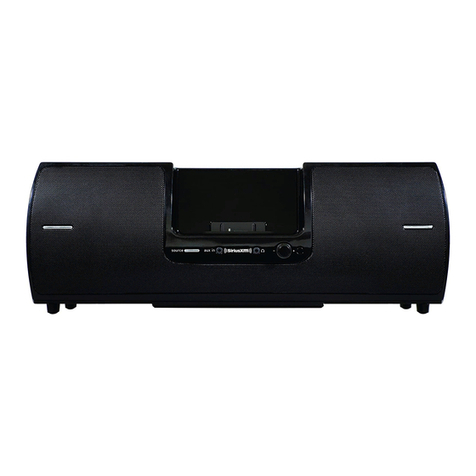
Sirius XM RAdio
Sirius XM RAdio 140708A Operation manual
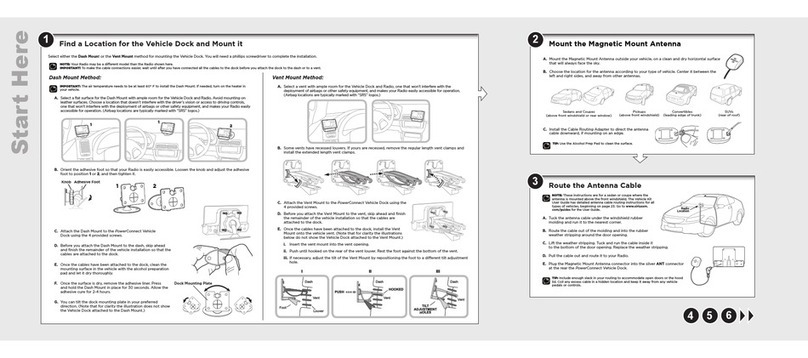
Sirius XM RAdio
Sirius XM RAdio DV2 User manual
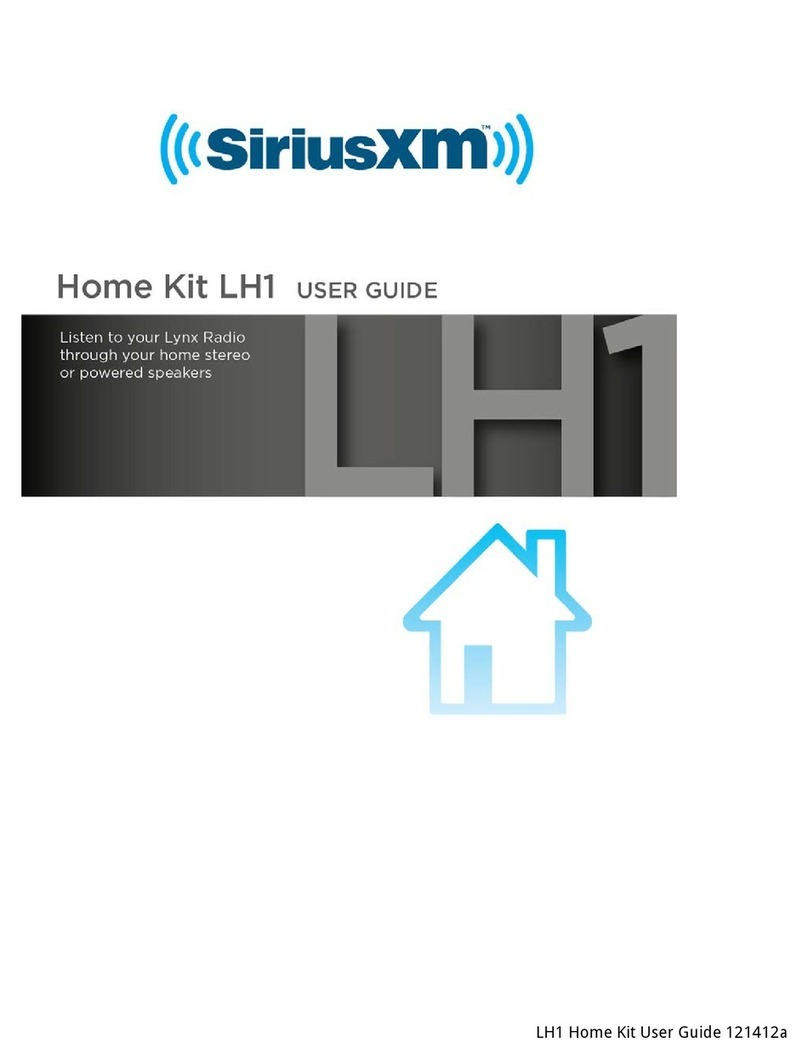
Sirius XM RAdio
Sirius XM RAdio Lynx LH1 User manual
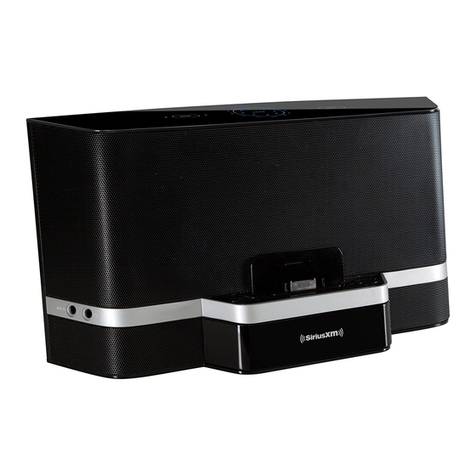
Sirius XM RAdio
Sirius XM RAdio Portable speaker dock User manual
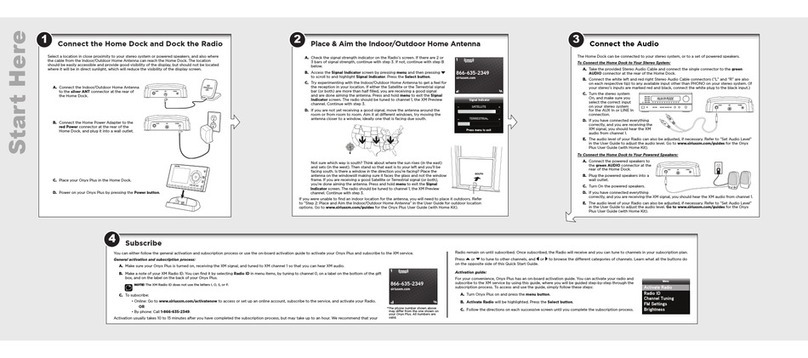
Sirius XM RAdio
Sirius XM RAdio Onyx Plus User manual

Sirius XM RAdio
Sirius XM RAdio Universal Home Kit User manual
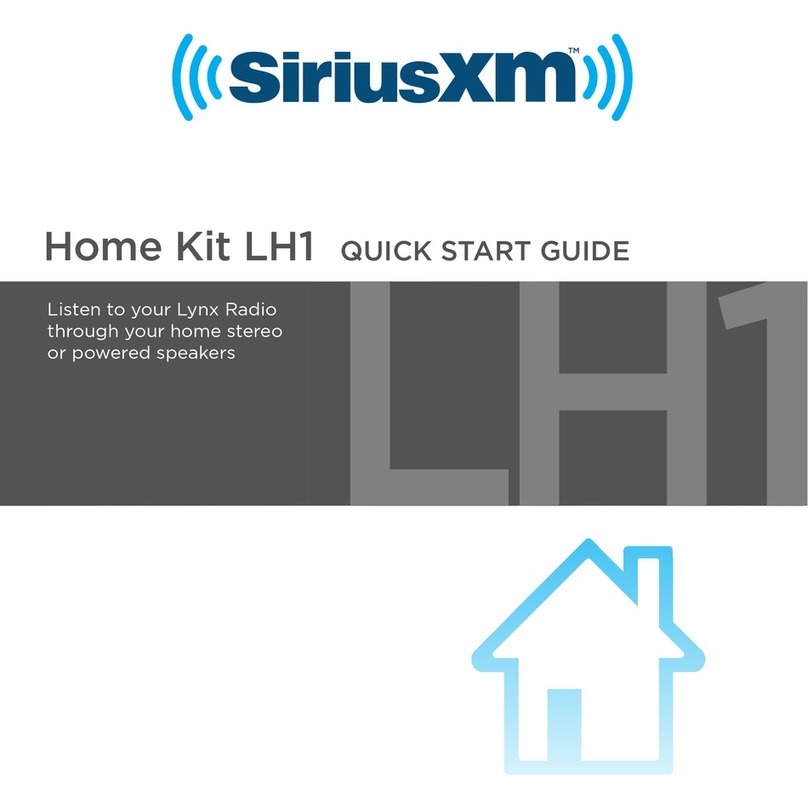
Sirius XM RAdio
Sirius XM RAdio Home Kit LH1 User manual


